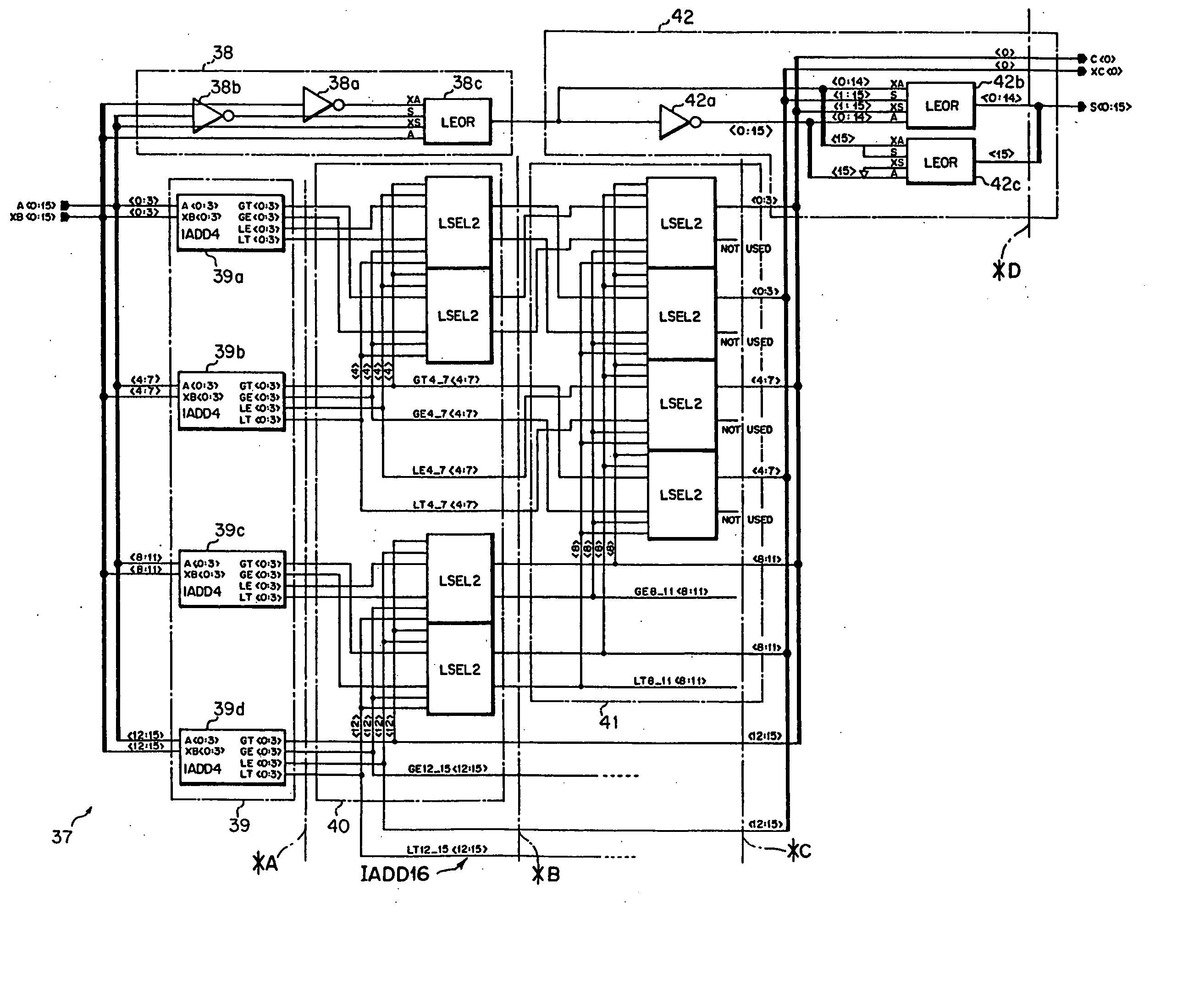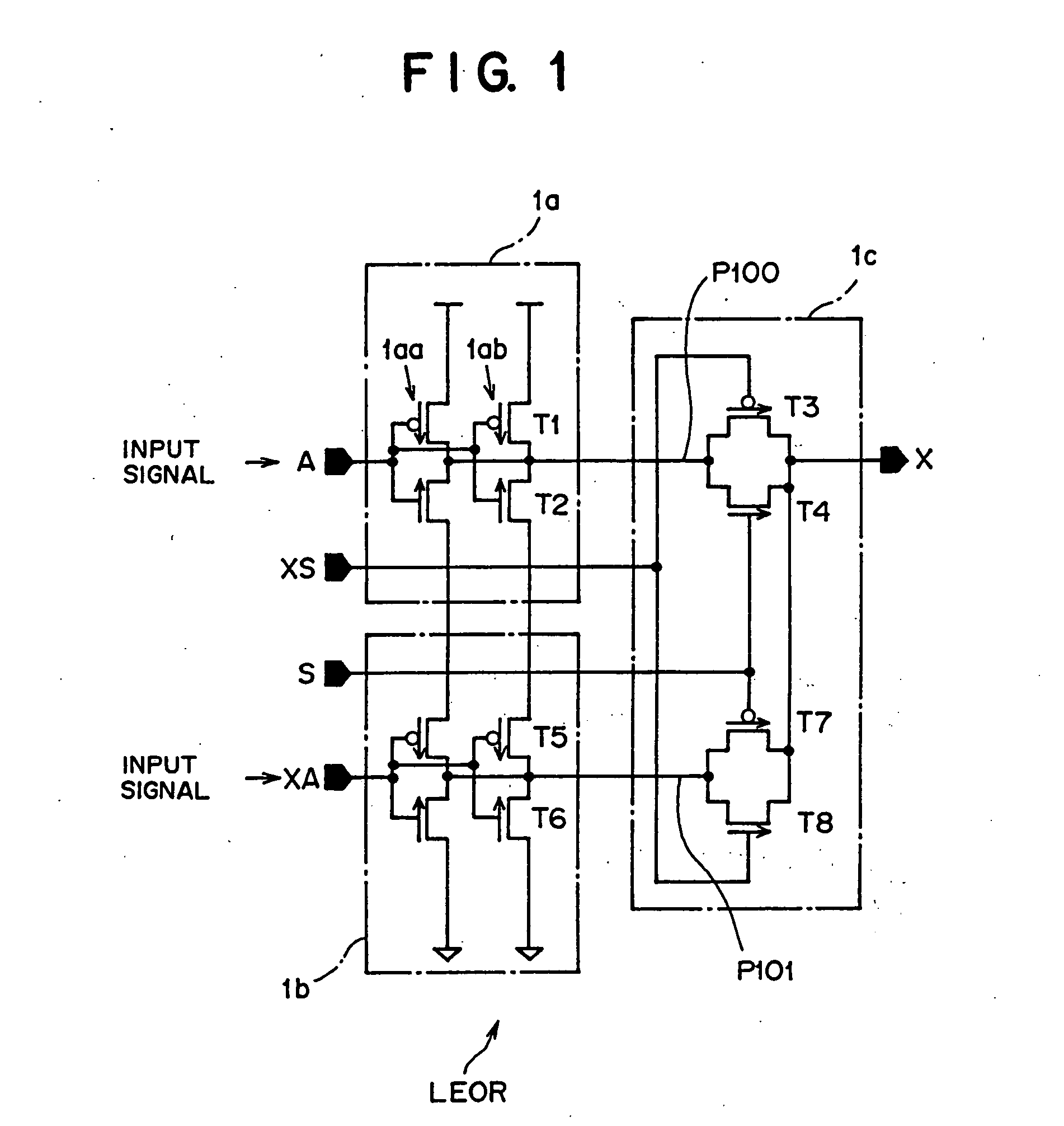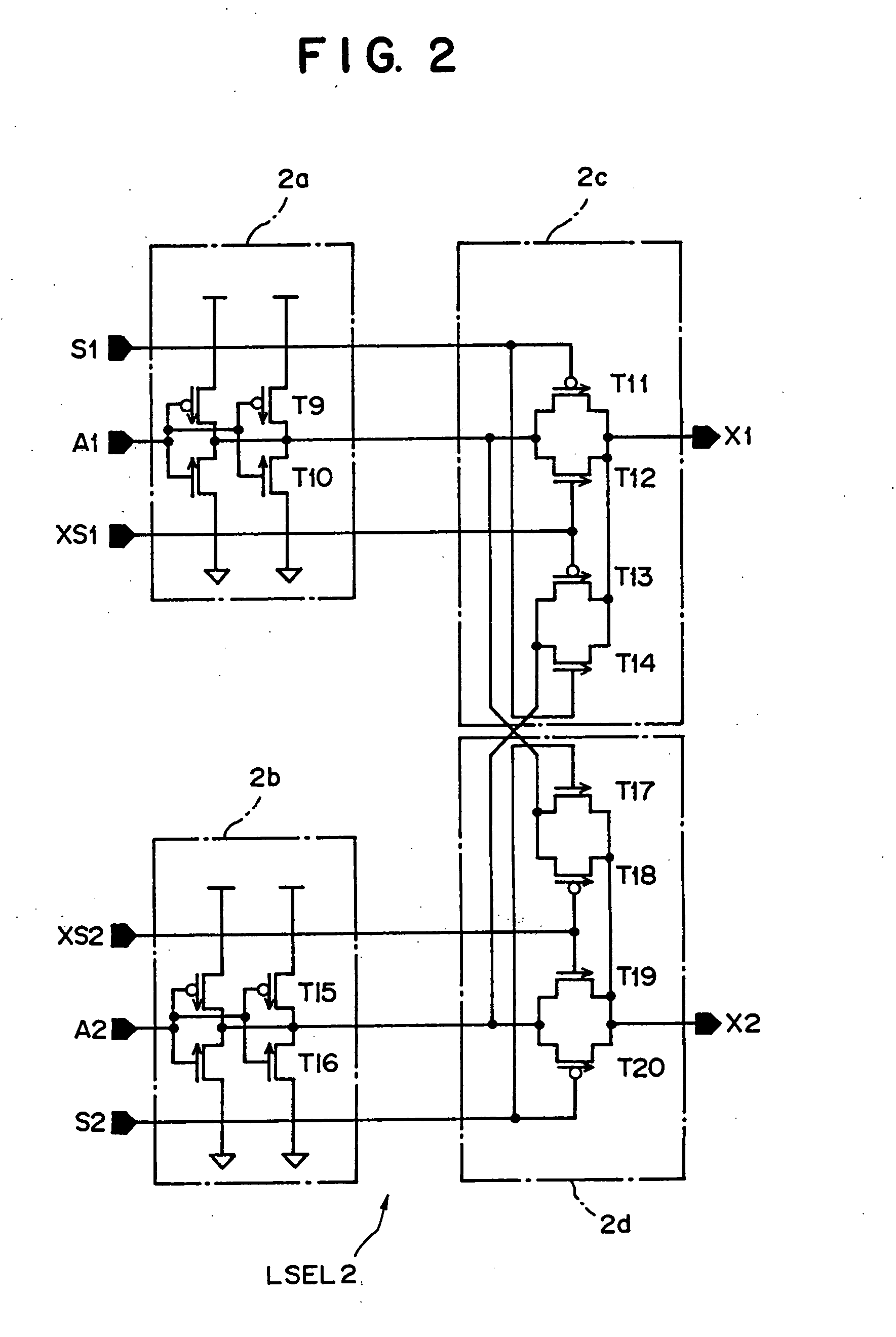Logic circuit
a logic circuit and circuit technology, applied in the field of logic circuits, can solve the problems of requiring excessive time, requiring a large number of parts, and requiring a large number of adder circuits
- Summary
- Abstract
- Description
- Claims
- Application Information
AI Technical Summary
Benefits of technology
Problems solved by technology
Method used
Image
Examples
first embodiment
A. First Embodiment of the Invention
[0075]FIG. 1 is a block diagram showing a construction of a first leaf cell according to an embodiment of the present invention. Referring to FIG. 1, the cell LEOR shown is a CMOS logic circuit composed of a first inversion section 1a, a second inversion section 1b, and a transmission section 1c, and has terminals A, XS, S, XA and X.
[0076] The first inversion section 1a inverts a first input signal having one of positive logic and negative logic and outputs the inverted signal. The first inversion section 1a includes two CMOS logics 1aa and 1ab connected in parallel. A signal inputted from the terminal A is inputted to the transistor gates of the two CMOS logics 1aa and 1ab. When the input signal from the terminal A is 1, a gate T1 has an off state and a gate T2 has an on state, and a signal line P100 has a ground potential. On the other hand, when the input signal from the terminal A is 0, the gate T1 is on and the gate T2 is off, and the signal...
PUM
 Login to View More
Login to View More Abstract
Description
Claims
Application Information
 Login to View More
Login to View More - R&D
- Intellectual Property
- Life Sciences
- Materials
- Tech Scout
- Unparalleled Data Quality
- Higher Quality Content
- 60% Fewer Hallucinations
Browse by: Latest US Patents, China's latest patents, Technical Efficacy Thesaurus, Application Domain, Technology Topic, Popular Technical Reports.
© 2025 PatSnap. All rights reserved.Legal|Privacy policy|Modern Slavery Act Transparency Statement|Sitemap|About US| Contact US: help@patsnap.com



